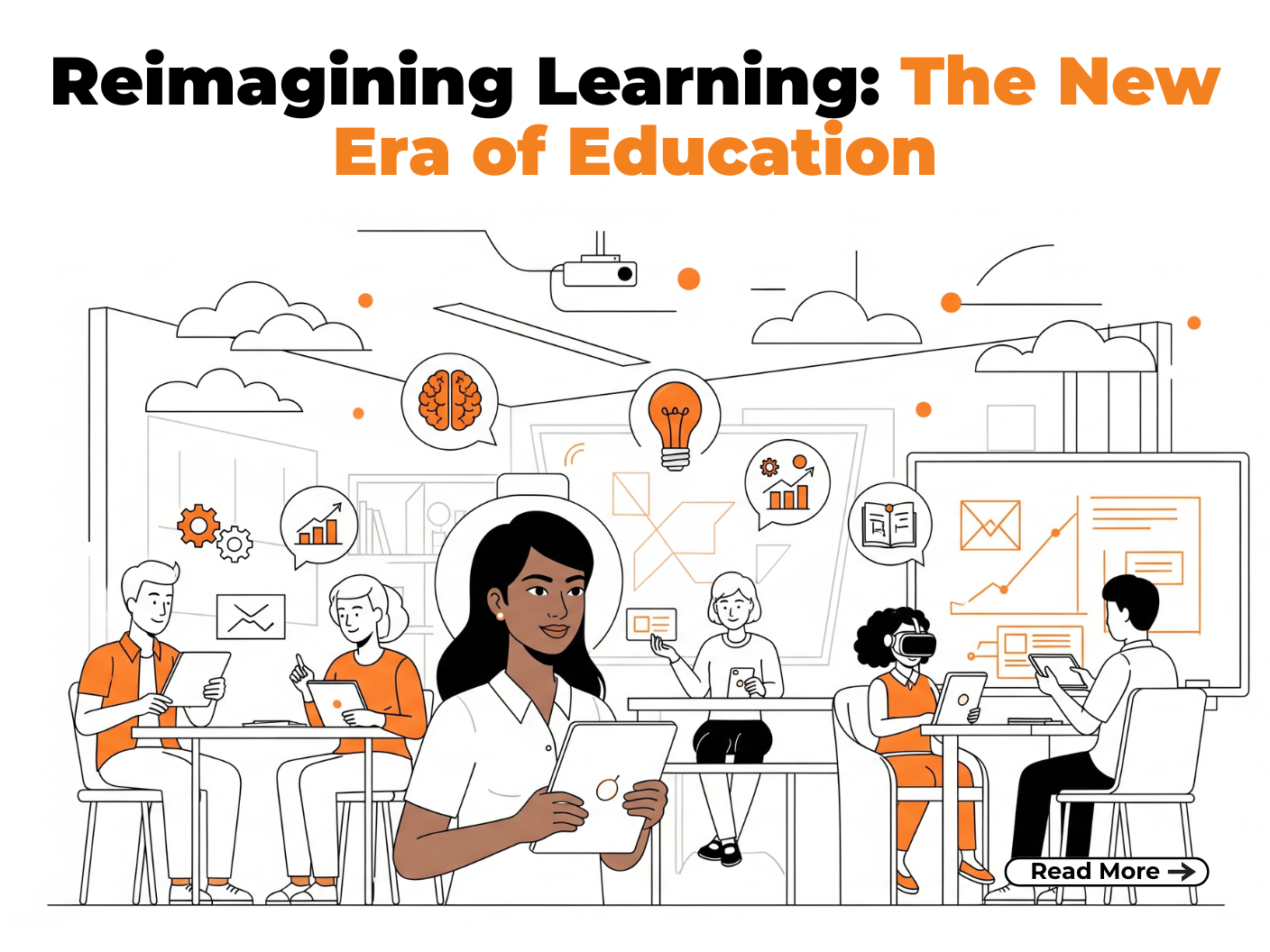In recent years, technology has evolved at lightning speed. One of the biggest drivers of this change is intelligent technology.
You hear terms like Artificial Intelligence (AI), Machine Learning (ML), and Deep Learning (DL) all the time. They sound similar, and many people think they mean the same thing. But they don’t.
These terms are connected but have different meanings. This blog will help you understand the difference between AI, ML and Deep Learning. We’ll explain what each term means, how it works, and where it’s used. You’ll also learn how to start a career in these fields and why LPU is a great place for that journey.
Whether you’re a student, working professional, or tech enthusiast, this guide will clear up your doubts. Let’s explore the world of AI vs ML vs DL.
What is Artificial Intelligence (AI)?
Artificial Intelligence, or AI, is a field of computer science. Its goal is to make machines act and think like humans. It allows computers to perform tasks that usually require human intelligence.
These tasks include:
- Understanding language
- Recognising images or faces
- Making decisions
- Solving problems
Types of Artificial Intelligence
There are three main types of Artificial Intelligence:
- Narrow AI: Also called weak AI. It performs one specific task. For example, Siri and Google Assistant.
- General AI: Still under research. It could handle any task a human can do.
- Super AI: A future concept. It would be more intelligent than humans in every way.
Where AI is Used
AI is already part of your daily life. Here are some common uses:
- Chatbots on websites
- Smart assistants like Alexa
- Online recommendation engines (Netflix, Amazon)
- Robotic process automation in business
Understanding “what is AI and ML” can help you grasp the foundation of today’s smart technologies.
Also Read – Career Opportunities in Artificial Intelligence in 2025
What is Machine Learning (ML)?
Machine Learning is a subset of AI. It lets computers learn from data. Unlike traditional programming, ML does not need fixed rules. Instead, the system improves on its own as it sees more data.
Types of Machine Learning
There are three main types:
- Supervised Learning: You give the computer data with labels. For example, emails are marked as “spam” or “not spam.”
- Unsupervised Learning: You give it data without labels. It finds hidden patterns. Used in customer segmentation.
- Reinforcement Learning: The system learns through trial and error. Used in robotics and gaming.
Where ML is Used
Machine Learning is all around us. Examples include:
- Email spam detection
- Fraud detection in banks
- Predictive analytics in marketing
- Recommendation systems
AI vs ML is a popular comparison because both are powerful, but ML focuses specifically on learning from data.
What is Deep Learning (DL)?
Deep Learning is a subset of Machine Learning. It uses algorithms called neural networks. These networks are inspired by the human brain.
In DL, data goes through layers of processing. Each layer learns something new. The “deep” in Deep Learning means there are many layers involved.
What Are Neural Networks?
Neural networks are made up of nodes. These nodes are connected like neurons in the brain. The more layers a network has, the deeper it is.
These layers allow the system to handle complex tasks. For example, it can recognise faces in photos or understand spoken words.
Where Deep Learning is Used
Deep Learning powers many advanced technologies:
- Voice assistants like Google Assistant
- Face recognition in phones
- Self-driving cars
- Medical image analysis
Deep learning vs machine learning is a common question. While both learn from data, DL uses multi-layered networks to handle more complex patterns and problems.
Key Differences Between AI, ML, and Deep Learning
Still confused? This table will make things clearer:
| Aspect | Artificial Intelligence | Machine Learning | Deep Learning |
| Scope | Broad (any intelligent system) | Subset of AI | The subset of ML using neural networks |
| Learning Method | Logic, rules, and reasoning | Learns from data | Learns using layered neural networks |
| Hardware Needs | Low to moderate | Moderate | High (needs GPUs and large datasets) |
| Examples | Siri, chess engine, smart robots | Email filters, product suggestions | Facial recognition, self-driving cars |
This is how Artificial Intelligence vs machine learning vs deep learning stack up against each other.
How They Work Together
Think of AI as the umbrella. Machine Learning sits under that umbrella. And Deep Learning is a smaller branch within ML.
Here’s a simple comparison often seen in the AI vs Deep Learning discussion:
- AI: The brain behind the system
- ML: The logic that lets the system learn from data
- DL: The complex, layered part that handles big tasks like recognising images or voice
Here’s an easy way to visualise it:
- AI is like a full toolbox.
- ML is one powerful tool in that box.
- DL is a high-tech version of that tool, used for the toughest jobs.
This shows the synergy in deep learning vs AI, they’re part of the same system, not in opposition.
Career Relevance and Learning Paths
These fields offer amazing job opportunities. With the right skills, you can build a career in tech, healthcare, finance, gaming, and more.
Where Should You Start?
Here’s a guide based on your interests:
- AI Research: Great if you love maths, logic, and theory.
- ML Engineering: Ideal for those who enjoy working with data and models.
- DL Specialisation: Best for students interested in computer vision, robotics, or natural language processing.
Popular Tools You Should Know
- Python – The most popular language for AI, ML, and DL
- TensorFlow – Ideal for Deep Learning
- PyTorch – Loved by researchers
- Scikit-learn – Great for basic Machine Learning
Learn one tool at a time. Build projects. Join competitions. This field rewards hands-on learning.
Why LPU is Your Ideal Launchpad
Lovely Professional University (LPU) is a leader in modern education. It offers cutting-edge courses in Btech in Artificial Intelligence and Machine Learning, and Deep Learning. LPU ensures students get hands-on experience through live projects and practical labs.
The faculty at LPU includes experts from top industries. Students learn not just theory, but also how to apply it in the real world. LPU hosts regular tech events, workshops, and hackathons. These give students a chance to build networks and showcase their skills.
What makes LPU truly special is its focus on industry exposure. Students work on real-world problems. They get internships and job opportunities with top companies. If you’re planning a career in AI, ML, or DL, LPU is the place to begin.
This blog, like many others from LPU, aims to simplify complex ideas. We want to help you understand what’s happening in the tech world and how you can be a part of it.
Conclusion
To sum up, here’s how you can remember the artificial intelligence vs machine learning vs deep learning difference:
- AI is the big idea. It aims to create smart machines.
- ML is a method. It teaches machines to learn from data.
- DL is a technique. It uses neural networks to solve tough problems.
Understanding these differences matters. It helps you make better choices. Whether you’re selecting a course, building a project, or choosing a career path, clarity is key.
As technology grows, the need for smart minds in AI, ML, and DL will keep rising. Start learning today, and step into the future.
FAQs
Q1: Is Machine Learning a type of AI?
Yes, ML is a part of AI. It allows machines to learn from data.
Q2: Which is more powerful, AI or Deep Learning?
Deep Learning is powerful in specific areas like voice or image recognition. But AI is the broader concept.
Q3: Do I need to learn AI before Deep Learning?
Not exactly. But starting with ML helps you understand DL better.
Q4: Can Machine Learning exist without AI?
No, ML is a subset of AI. They go hand in hand.
Q5: What are the best tools to learn Deep Learning?
TensorFlow and PyTorch are great choices. Both have wide community support and rich features.














